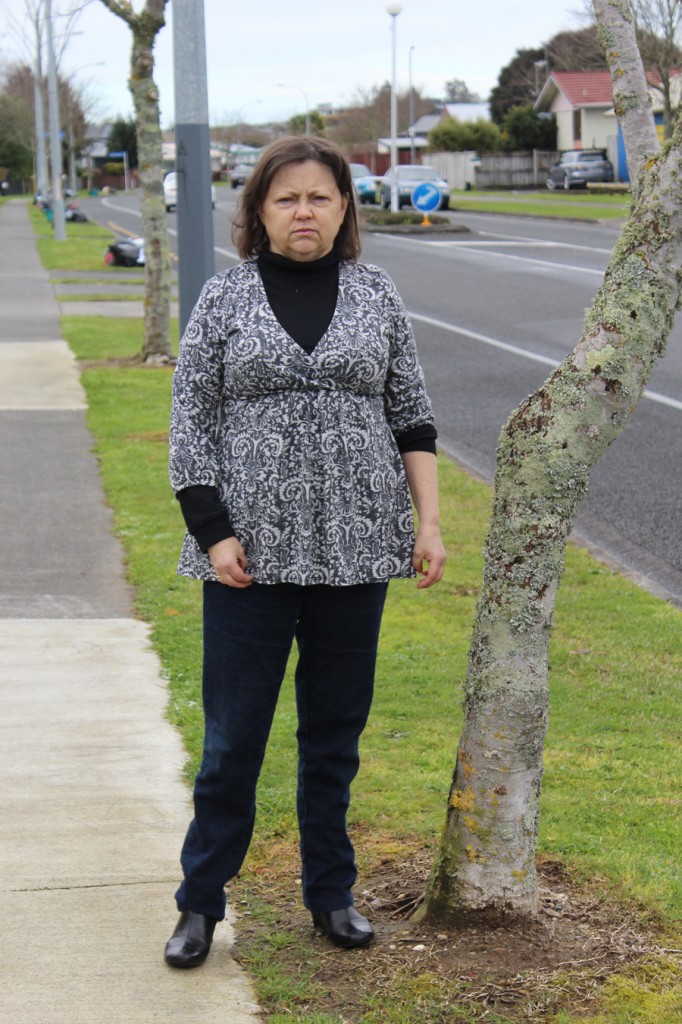Nawton resident fed up with unsuitable street trees
A Nawton resident says street trees in her neighbourhood cause dangerous damage to footpaths, and council are wasting ratepayers’ money with preventable and ongoing repairs.
Council planted street trees alongside residential footpaths to enhance the neighbourhood’s appeal, but one Nawton resident said she is unhappy with the problems they cause.
Kaye Roberts, 52, noticed the street trees in her neighbourhood damage the footpath as their roots grow and form an uneven walkway.

“It is a hazard, and it is a waste of my money,” Roberts said.
Roberts has lived on Dominion Road for about three years. The road is well-used by pedestrians – especially by children heading to the nearby park.
In fact, Roberts, who works as a customer service representative for a power company, uses the footpath daily to get to and from the bus stop because she does not drive.
Roberts said she has tripped up on the cracked pavement before.
Council has previously cut down street trees in other areas when their roots cause hazardous damage to the footpaths.
Earlier this year council removed Honey Locust trees from a Hamilton East street and replaced them with upright oaks, stating they were more suitable for roadside verges.
This is despite council’s streetscape beautification and management policy stating the location and selection of street trees avoids damaging effects on assets, including footpaths.
“They should select trees that are not going to damage the footpath,” Roberts said.
Roberts said in front of almost every maple tree on her street, there is new, white concrete, mismatched to the rest of the walkway – and it is not the only street she has noticed it on.
She was tempted to attend a mayoral debate to ask why council plant trees that damage the footpath and spend even more of ratepayers’ money fixing it.
Regular maintenance is carried out by council to repair footpath faults – accumulating to about 20km of footpath resurfacing each year.
Roberts said council eventually repair the pavement when necessary, but it remains uneven in some areas where the roots were not chopped down enough.
Hamilton has over 30,000 street trees, but council planned to reduce the maintenance of their trees last year to save about $300,000 a year.
Roberts said she also has a problem with council deciding to plant deciduous trees on footpath berms because they block storm water drains and make a mess on her property.
“I don’t like all of their decisions, but no one is going to like all their decisions,” Roberts said.
When Hamilton had flash flooding back in April this year, Roberts said her whole street flooded, and she blames the leaves which were blocking the drains.
Council have street sweeping trucks which help remove leaves from the streets, but they do not operate regularly enough in autumn to continuously prevent drain blockages.
One thing Roberts said she was impressed with in her neighbourhood was how quickly council remove graffiti.
Roberts has had graffiti on her fence a couple of times, and she said it is a reoccurring problem in her area.
She was impressed that she sometimes did not need to call council for it to be cleaned up, because regular graffiti removal is performed throughout the city.
Council have graffiti painters who also respond to calls on their tagging hotline.
Hamilton City Council currently spend about $500,000 a year removing graffiti.




